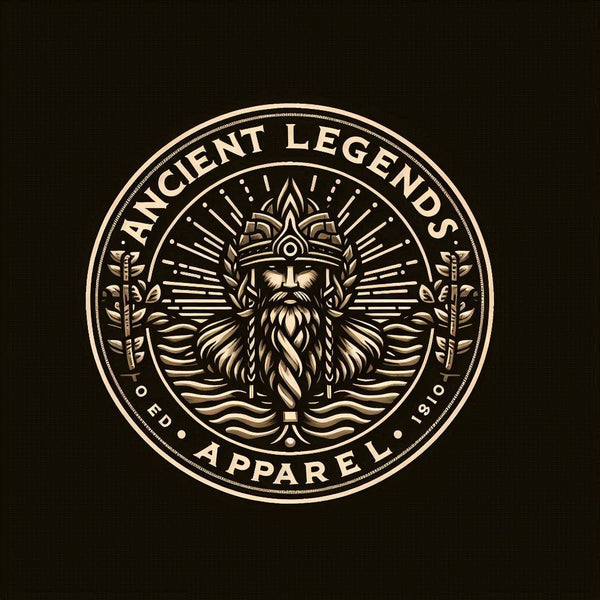Warriors vs. Beasts: Epic Duels in Legendary Weapons
Karl FShare
INTRODUCTION
In the realm of ancient legends, myths, and folklore, the battle between a valiant warrior and an indomitable beast is a recurring central theme, intricately woven into a multitude of tales. These epic showdowns embody the ceaseless struggle between good and evil, human and monster, light and darkness. They encapsulate the courage of the lone warrior, the terror of the ominous beast, and the power of the legendary weapon they wield. These battles are far more than simple bouts of physical strength; they are steeped in profound symbolism, filled with ancient wisdom and fundamental truths about humanity’s nature. They strike a deep chord in our collective psyche, enticing us to further unravel the hero's journey and the beast's existence.
ORIGIN AND CULTURAL CONTEXT
Legends of warrior battles can be traced back to the earliest civilizations, permeating various cultures worldwide. One of the most prominent examples is the Greek myth of Heracles and his twelve labors, which narrates the hero's battles against monstrous creatures like the Nemean Lion and the Hydra, using his exceptional strength and invincible club. Similarly, the Nordic Valkyries known for wielding powerful weapons like the spear and shield echo this thematic pattern.
These combats are often more than just physical struggles—they represent internal confrontations between the human and the non-human, symbolizing the archaic ethos to conquer our base instincts and ascend to a noble state. The warrior signifies the idealized vision of humanity, one armed with courage, honor, and relentless strength, whereas the beast symbolizes the primal, and often malevolent, aspects of life.
THE LEGEND OR STORY
One compelling account is the story of Beowulf, the courageous ancient Scandinavian warrior, who defeats the monster Grendel and later his mother, using his strength and a magical sword. The hero is honored for his bravery, yet his tale concludes with a tragic encounter with a dragon, illustrating the harsh inevitability of fate.
Beowulf, representing a dexterous human form buoyed by honor and courage, contends against Grendel, a terrifying embodiment of chaos and destruction. The legendary weapon, recognized as the manifestation of divine intervention, often becomes the deciding factor in these battles. Here, it is the magical sword forged by the giants, capable of slaying the seemingly invincible Grendel's mother.
INTERPRETATIONS AND SYMBOLISM
Every component of these legends carries a deep symbolism. Beowulf's battle can be seen as a depiction of a hero's journey towards achieving a noble state, with the beast signifying the hurdles or the undesirable aspects of humanity. The hero’s struggle, therefore, isn’t merely against an external enemy, but essentially against inner darkness.
The legendary weapon, in this context, can be interpreted as the actualization of virtues like bravery, wisdom, or divine favor aiding the hero during their arduous journey, often at the most critical junctures.
COMPARISONS IN OTHER CULTURES
Transcending geographic boundaries, similar themes appear in diverse cultures. In Hindu mythology, we find the tale of Lord Rama vanquishing the demon king Ravana with a divine bow and arrow. The Japanese folktale Momotaro narrates the young hero's victory over the Oni demons with his celestial weapon, symbolizing the triumph of virtue over vice.
Each instance strengthens the assertion that these tales are not merely about physical conquest, but about a spiritual journey, a struggle against the fears and evils within and without.
MODERN REFERENCES AND POP CULTURE
Today, these legendary battle motifs continue to pervade popular culture. In J.R.R. Tolkien's Middle Earth saga, the duel between the hobbit Bilbo Baggins and the dragon Smaug is a striking example. Similarly, George R.R. Martin’s 'Game of Thrones' series is rife with such confrontations, revealing insights into personal and societal struggles. The mythical beasts and the legendary weapons they encounter mirror the paradoxes of human nature—of courage and fear, of kindness and cruelty.
LEGACY AND LASTING MYSTERIES
These heroic battles and mythical creatures, with their intertwining themes and complex symbolism, encapsulate an age-old struggle that resonates with our inherent existential conflicts. They have lured countless individuals into a world of fantastical mystery, sparking incisive debates, scholarly discourse, and archeological quests.
Perhaps the most intriguing mystery is the presence of these similar tropes across distinct cultures and ages. Do they signal a shared cultural heritage? A common human conscience? These recurring patterns are a testament to the undeniable link between diverse civilizations, highlighting our shared human experience and enduring fascination with the extraordinary.
From the dusty pages of ancient lore to the flickering screens of modern cinema, the battle between the warrior and the beast remains a captivating spectacle, an enduring testament to the power of narrative and the remarkable complexity of the human experience. These duels, whether fought with legendary weapons or the sheer force of will, continue to be a deeply resonant motif, skillfully narrating our timeless journey towards virtue, valor, and victory.
